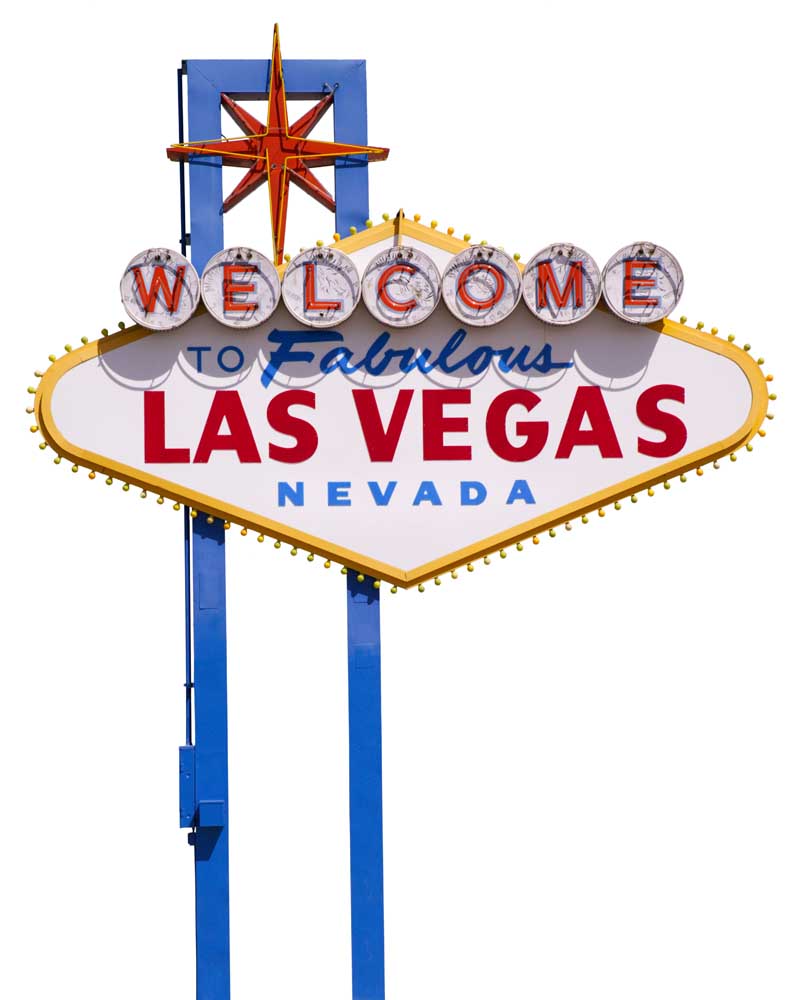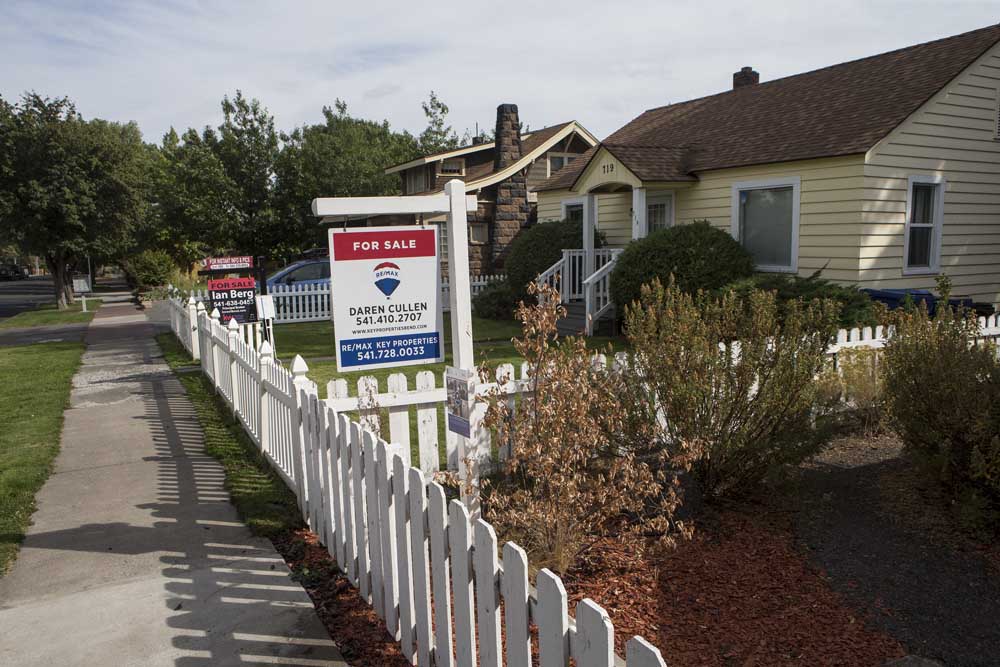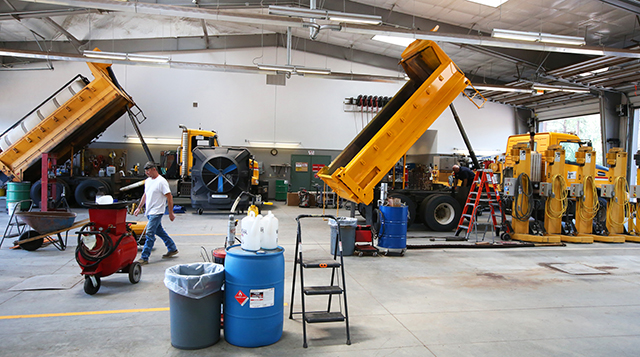Travel: Snapshots from Vegas
Published 12:00 am Sunday, January 17, 2016

- Thinkstock
LAS VEGAS —
The statistics are staggering. More than 42 million people visit Las Vegas each year. They invest $9.4 billion in the gaming industry, two-thirds of it in the casino resorts on the Las Vegas Strip.
Trending
That fabled “Strip,” 4.4 miles of South Las Vegas Boulevard from the Stratosphere to the Mandalay Bay casino resorts, contains 17 of the 20 biggest hotels in the United States. Many of them are as well known for their architecture — the Paris has its own Eiffel Tower, the Luxor is designed like an Egyptian pyramid, the Venetian has gondoliers on its Grand Canal — as for their gaming rooms. The Bellagio has choreographed fountains, Chihuly glass sculptures and original Picassos. Caesars Palace re-creates a Roman forum.
Some of the restaurants rank among the finest in the world. Others stand in food courts that cater to the most budget-conscious of diners. There are bars and nightclubs, and in many casinos, showrooms that feature nightly shows by some of the biggest names in entertainment today: Celine Dion, Brittney Spears and Elton John among them.
What follows is a series of snapshots from my most recent visit to Las Vegas. I offer them not to recommend what to see and do, but rather to share some of the flavor, for better and for worse, of modern Las Vegas.
Convention central
A large slice of the Las Vegas pie is provided by the convention business. Some 22,000 conferences, more than 400 a week, attract 6 million visitors a year, according to the Las Vegas Convention & Visitors Authority. Many of these meetings are small, with 200 or so attendees. Others are enormous.
The single largest is the International Consumer Electronics Show, held annually since 1978 during the first full week of January. Showcasing the latest innovations in everyday technology for home and office, communications and entertainment, this convention alone pumps more than $210 million into the Las Vegas economy.
Trending
Earlier this month, while my friend, photographer and tech writer Barb Gonzalez, joined 170,000 other attendees on the convention center floor, I took the opportunity to explore the city. With so many techies in town — nearly 50,000 of them from 150 foreign countries — the flavor was different than it might have been on any other week of the year.
Taxi drivers were never lacking in business. The city’s monorail, which extends about 3 miles from the MGM hotel, past the convention center to the new SLS casino resort, had continual lines.
Those who attended the meetings were stunned by the new technology releases. Gonzalez herself donned sense-surround goggles and headphones to climb a section of Mount Everest in virtual reality. Others encountered a Segway robot that doubles as a personal butler; a refrigerator that will order your groceries; an alarm clock that wakes you up with the smell of coffee or chocolate; and a cupboard that steam-cleans your clothes in your home closet.
Central Oregonians, in particular, might love to own a home-brewing appliance with drop-in craft beer packs; an airbag vest for skiers; a bow tie for your dog, tracking its activity level based on breed, size and age.
Many of the dinners and parties continued until 2 a.m. or later. Conventiongoers reported meeting such luminaries as Ryan Seacrest, Shaquille O’Neal, Michael Phelps and Mark Cuban at these. Magic Johnson hosted the annual Monster Cable party, a tribute to Michael Jackson with visits by George Benson and Aerosmith. Elton John dropped in at one private event that had hosted Dave Matthews a year earlier.
The Miracle Mile
I saw many other celebrities as I walked the sidewalks of the central Strip between the Venetian and the MGM. I was delighted to make the acquaintance of Mickey and Minnie Mouse, Hello Kitty and Peanuts’ Snoopy, Gumby and the Coca-Cola polar bear. There were showgirls, a couple of stripper cops and several members of the cast of “Star Wars.”
As I sipped a cup of coffee at rock singer Sammy Hagar’s Cabo Wabo, I overheard an obnoxious tourist demanding a 44-ounce margarita that he had seen advertised. He grumped away when he was assured he wouldn’t get it here. But I’m sure it was 5 o’clock somewhere.
Cabo Wabo is at the entrance to the Miracle Mile Shops, which wrap around the Planet Hollywood casino resort. Up and down the Mile, shops were surprisingly low priced for their location. I found a new pair of dress shoes for $99. There were women’s boutiques, men’s formal wear shops, eyewear stores and much more. At the back of the Miracle Mile is a lounge where women can take lessons in pole dancing. Nearby is a showroom featuring Australian men who shed their clothes as “Thunder Down Under.”
Outside, it was raining. Las Vegans are not as used to a light, persistent drizzle as are Northwesterners. Neither are many tourists. Umbrella sales were brisk. (A hat was more than sufficient.) City engineers clearly were not prepared for a rain that wouldn’t have been given a second thought in Portland. Not only was drainage poor on the boulevard and the sidewalks; water was pooling on the pedestrian overpasses where proper construction could have made easy provisions that now would be far more expensive.
Eating on the Strip
I soon found my way to the Pete Rose Sports Bar and Grill. Popular singers Jimmy Buffett and Toby Keith have their own establishments on the Strip; why not the “Hit King” himself? Rose, 73, is hardly a legend in Las Vegas, but the city has provided him with a decent living since he was excommunicated from the sport he loves, baseball.
Rose played in more games and had more hits than any other major leaguer in history, over a career that extended from 1963 to 1986. He continues to sign autographs and tell stories when he “goes to work,” as he says, at the Stars sports memorabilia shop at the Mandalay Bay, after years at Caesars Palace. “I’m sorry that I bet on baseball,” he wrote on the ball he signed for me, although he continues to insist that he never bet on his own team to lose.
He has invested in a restaurant, which opened in October directly across Las Vegas Boulevard from the Monte Carlo. Rose drops by mornings for breakfast, wearing a polo shirt and a ball cap, and frequently for dinners. His favorite meal is a Chinese chicken salad accompanied by a rack of baby back ribs with chili and cheese. It’s called the Pete Rose Special. “Try the ribs!” he exhorts patrons.
“Our menus represent the love affairs Pete had with the cities he played in,” said general manager Benji Chen. There were three of them: Cincinnati, Philadelphia and, briefly, Montreal. Thus diners will find a Phillies cheesesteak and an Expos poutine along with a Cincinnati 3-way (spaghetti, chili and cheese), which I hope is not symbolic of a love affair.
Décor is true to the hardball theme, as painted red stitching tickles the corners of ceiling arches that resemble baseballs. Thirty-two flat-screen televisions hang on the walls, matching the 32 beer taps behind the long bar. Souvenirs of Rose’s career hang on walls throughout the establishment, including unabashed reports of failures as well as successes.
Rose’s was not the only new restaurant I visited. The Vietnamese pho (beef noodle soup) that I enjoyed at Dragon Noodle Bar, in the main casino room of the Monte Carlo, featured broth made in-house from the marrow of pork and beef bones. And as a seafood lover, I was blown away by Lobster Me, which has outlets both in Planet Hollywood and on the Grand Canal in the Venetian. Its star attraction is a “lobsicle,” a tempura-fried lobster tail on a skewer for $14.
Sin city
New York has the moniker, but Las Vegas is truly “the city that never sleeps.” Vegas has a thriving entertainment scene that caters as much to residents of this city, its metropolitan population now at 2.2 million, as it does to its throngs of visitors.
It starts in the casinos. Ever since Meyer Lansky and Bugsy Siegel established the Flamingo with the legalization of casino gambling in Nevada in 1931, the poker and craps tables, roulette wheels and slot machines, nicknamed “one-armed bandits,” have captivated visitors to this desert city. You can still find some of the city’s original slot machines in the Vintage Vegas room on the second floor of The D (formerly Fitzgerald’s) on Fremont Street in downtown Las Vegas, several miles north of the Strip.
I was playing a poker machine at the Mirage when I very nearly drew a royal flush. An ace, king and queen of spades looked very friendly when they came up on my first draw. I spun a second time, held my breath when I saw a jack of spades, then grimaced when it was joined not by a 10 of the same suit, but by a 4 of diamonds. I lost only $1, but I might have won $1,000.
My favorite casino watering hole in Vegas is the Chandelier Bar in the glittering new Cosmopolitan, just south of the Bellagio. Glass beads drape around a three-story bar in the middle of the casino, giving it a rich and magical appearance. This week, it was perpetually busy with conventioneers greeting new and old friends.
The nightclub scene is huge. Many of the hotels, including the MGM (Hakkasan) and the Venetian (Club Tao), keep their dance clubs open nearly until dawn. Famous disc jockeys like Tiesto and Steve Aoki play their hypnotic techno beats ad infinitum for the Vegas in-crowd.
Many of this group, tuxedoed men and tall, beautiful women in 4-inch heels, started their evenings early on the Wednesday that the Encore opened its new Players Club. Some first attended a cocktail party at Jardin, a garden-themed restaurant formerly known as Botero. Then it was on to the Encore Players Club. I found some conversation and a little action at a craps table, but mostly I stood back and watched the interaction. A good part of it seemed to revolve around 74-year-old Robin Leach.
No Vegas party, and especially no opening, is complete without the attendance of Leach, who for the past 15 years has blogged about local entertainment. Once famed as host of the “Lifestyles of the Rich and Famous” television show, he welcomes the attention he continues to receive. But he appeared to be better focused on a bottle of Dom Perignon that had been upended into a bucket of ice and orange juice, providing Leach with mimosas from an easy tap.
Firing away
The last time I picked up a gun of any kind, I was a teen-ager. I took a hunter safety course and earned my marksmanship merit badge in the Boy Scouts. That was a very long time ago. I went to college with a student deferment and did not serve in the armed forces.
Yet just 10 days ago, I climbed into a military Jeep as I waited outside the historic 1941 El Cortez Hotel in downtown Las Vegas. My driver, a young Marine Corps veteran dressed in camos, took me to a complex called Battlefield Vegas, behind the Circus Circus hotel on Industrial Road. Tanks and helicopters stood behind a chain-link fence covered with shredded canvas and topped with barbed wire.
I was dropped off at a one-story building with motifs of various firearms painted upon its broad eaves. Inside the double doors was a gift shop selling all sorts of souvenirs, from guns to hats and T-shirts, and even toy grenades “for ages 3 and up.”
At the registration desk for the gun range, I was offered a catalog with at least two dozen choices of weapons experiences. Many of them were based upon historic battles, featuring guns actually used on D-Day and at Iwo Jima. Other options featured the weapons used in such movies as “Platoon” and “Saving Private Ryan.” Still more represented popular video games, such as Black Op and Modern Warfare in the Call of Duty series. Prices varied from $99 to $695.
I paid $159 for “The S.W.A.T. Experience.” I was paired with weapons instructor Genaro Howell, a 20-year Air Force veteran. He fitted me with goggles and protective earphones, then led me through a double set of sound-proofed doors to the 11 shooting lanes. Initially, even with my ears protected, I found the pop-pop-pop in the firing range almost deafening.
Howell walked me through the use of four firearms — a Remington 700 rifle fitted with a sniper scope; a Glock 17 handgun; an MP5 sub-machine gun, and a Mossberg 500 tactical pump-action shotgun. In all, I fired 80 shots at a target, having modest success with the Remington but difficulty with flinching when I fired the Glock.
Mob memories
Executive director Ron Cheney, one of three owners of Battlefield Vegas, told me that he has about 750 weapons on the property, 550 of them automatic weapons. An Army veteran who worked 14 years as a chiropractor before opening this range in October 2012, Cheney said he had long dreamed about having a place where people could recreationally shoot in a controlled environment.
“Firearms are not toys,” he said emphatically. “There are laws and regulations. So we keep to military standards. It’s hard to provide that with employees who weren’t military, and nearly all of the 68 people who work for us are veterans. We go out of our way to employ them.”
Back in the Fremont Street neighborhood that afternoon, I still had my machine-gun experience in mind when I visited the Mob Museum, which will observe its fourth anniversary next month — on the 87th anniversary of the notorious St. Valentine’s Day Massacre. The museum had the chutzpah to reassemble the brick wall from that bloodbath for public display.
Officially known as “The Mob Museum, National Museum of Organized Crime & Law Enforcement,” this gallery is housed in the 1933 Las Vegas Post Office and Courthouse. Its collections tell stories from the perspectives of mobsters, police and politicians. There are more than 600 organized-crime artifacts and other memorabilia, including the barber chair where mob boss Albert Anastasia was gunned down in 1957.
Fremont Street itself has changed dramatically since that era. The former Glitter Gulch was covered by a vaulted canopy in 1995. Known as the Fremont Street Experience, this four-block-long overhead display features more than 12 million LED lamps and a 550,000-watt sound system. Hourly light-and-sound shows each night feature themed topics (American patriotism, an alien invasion) to the best of classic rock bands. It’s free, unless you choose to pay a few dollars to ride a commercial zip line beneath the lights.
For further information, you can contact the Las Vegas Convention & Visitors Authority at 702-892-0711, or www.lvcva.com.
— Reporter: janderson@bendbulletin.com








